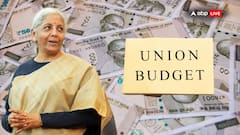6 Challenges Before FM Nirmala Sitharaman As She Presents Union Budget 2023 Today
While the economy is recovering from aftershocks of Covid, inflation, unemployment and agricultural distress pose challenges to the FM in an election year

Finance Minister (FM) Nirmala Sitharaman will be presenting Narendra Modi-led BJP government’s 9th full Budget on February 1, 2023 amidst an economy recovering from the Covid pandemic, growing concerns of a global slowdown, tech layoffs, and a threat of a global recession looming large.
Some of the challenges which Sitharaman will be facing are enumerated below:
High Unemployment
The unemployment rate in India has increased from 6.56 per cent in January 2022 to 8.3 per cent in December 2022 as per CMIE. Urban unemployment rate is higher than rural unemployment by more than 2.5 per cent. Unemployment is touted as Modi government’s second-biggest failure as per a C-Voter survey conducted recently.
Many states in India are doling out unemployment allowances as of today. The government is cognisant of this issue hampering its re-election bid in 2024 and has announced filling up of 10 lakh government jobs. Recent tech layoffs are adding to the problem and the FM may have to consider an urban NREGA program which would disturb the fiscal math.
High Inflation
Inflation in India is back to levels witnessed during Covid. Last year, retail inflation jumped to 6.7 per cent from 5.1 per cent in 2021. For 10 of the 12 months, inflation was above the 6 per cent target set by the RBI. Price rise is considered as the top most failure of the Modi government by the same C-Voter survey. Hike in excise duty on petrol/ diesel and cooking gas cylinders has led to prices crossing the Rs 100/litre mark and Rs 1,000/cylinder mark (non-subsidised LPG), respectively.
With per capita income still below pre-Covid levels, high inflation acts as a double whammy. India's annual per capita income based on Net National Income (NNI) at constant prices was at Rs 91,481 in FY21-22, versus Rs 94,270 in FY19-20. Excise duty on fuels at Rs 3.63 lakh crore in FY21-22 have become an important source of revenue for the government, almost 25 per cent of entire GST collections, and any relaxation could impact fiscal deficit.
The Modi government has prided itself to keep price rise under check, it couldn’t come at a wrong time with 9 state elections and general elections due next year. High inflation erodes the purchasing power of poor and Nicole class voters.
Pessimism in Consumer Confidence
Consumer confidence for the latest period, November 2022, has continued on its recovery path after the second wave of the Covid-19 pandemic, though it continues to remain in the pessimistic zone. The current perception though improving is still negative about the general economic situation, employment, price level, and household income. Sitharaman has an uphill task at hand, to take measures to improve the confidence, without which consumer spending is unlikely to gain momentum in FY23.
Economic Slowdown
Global growth is expected to decline from 3.6 per cent in 2022 to 2.7 per cent in 2023 as per IMF. While India is a bright spot in the world economy right now, its GDP is projected to moderate to 5.8 per cent in 2023 as higher interest rates and global economic slowdown weigh on investments and exports.
As per WTO global trade growth is likely to slow to 1 per cent in 2023 from 3.5 per cent in 2022 which is likely to put a pressure on our exports. Manufacturing the largest job creator continues to be the laggard expected to grow at just 1.6 per cent in FY22-23 weighed down by high input cost. While private consumption has recovered, higher interest rates and layoffs are likely to put pressure on it in the next year.
Tight Fiscal Road Map
As of November 2022, we have already touched 59 per cent of our fiscal deficit target due to increased capex and slow growth in non-tax revenue. Fiscal deficit is the difference between expenditure and revenue and is funded by market borrowings. It is pegged at 6.4 per cent of GDP for FY22-23 which is likely to be met due to good tax collections both direct and indirect.
However, we have set a target of fiscal deficit to be reduced to 4.5 per cent of GDP by FY25-26. Demand for populist schemes and dependence on government to do the heavy lifting through increased spending may put pressure on fiscal road map and needs deft handling by FM.
Clamour from Voting Cohorts for Relief
There is a growing clamour not only from individuals but also from industry to provide some sort of tax relief. Leaving more money in the hands of people is likely to address the demand side problem and provide a boost to consumption. However, as it’s said, there are no free lunches. This will lead to loss of revenues for the government, which it will need to compensate in some form or another. Either by bringing in some other tax, or by reducing expenditure, which the government can’t risk in an election year.
Agri distress has led to a clamour to increase the Kisan Nidhi dole from Rs 6,000 to Rs 8,000 per annum per farmer. This has the potential of increasing the Budget on this Yojana by Rs 25,000 crores. On the other hand, capital market participants are demanding rationalisation of capital gains structure and relaxation to boost investments in stock markets.
To sum up, the Indian economy is still facing insurmountable challenges and Sitharaman will have to toil hard to bring the economy back on track. Let’s wait and watch what she has in store in her Briefcase for Budget 2023.
Amitabh Tiwari is a SEBI-registered investment advisor.
[Disclaimer: The opinions, beliefs, and views expressed by the various authors and forum participants on this website are personal and do not reflect the opinions, beliefs, and views of ABP News Network Pvt Ltd.]
Related Video
Union Budget 2025: Arvind Kejriwal lists the shortcomings of the Modi government's budget | ABP News | AAP
Top Headlines





































